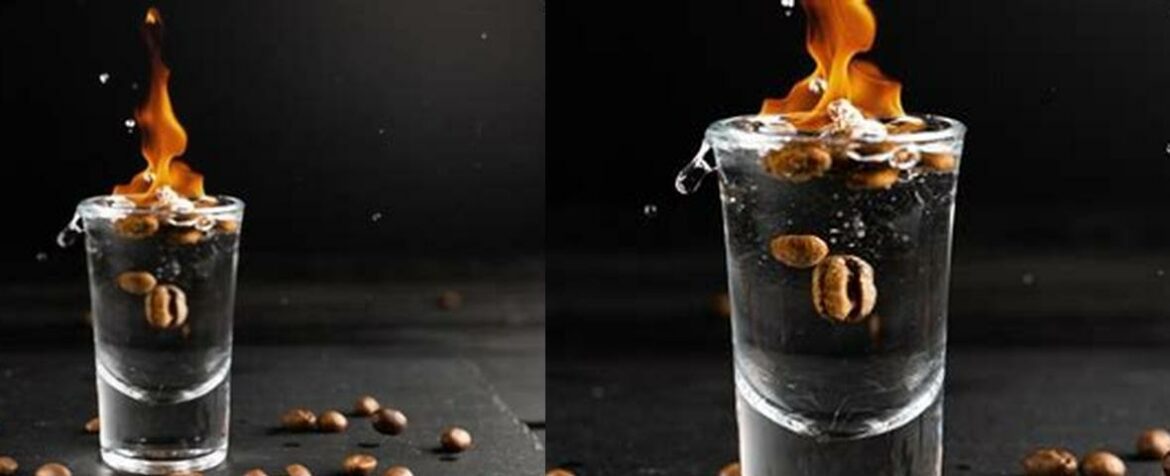What does sambuca taste like: Are you ready to embark on a tantalizing journey of flavors? Imagine sipping on a glass of Sambuca, an enchanting elixir with a multifaceted flavor profile that is sure to captivate your taste buds. If you’ve ever wondered what Sambuca tastes like, you’re in for a treat. In this blog post, we’ll explore the unique characteristics and delightful nuances of this Italian liqueur. So, grab a seat, pour yourself a glass, and let’s dive into the world of Sambuca. Get ready to be amazed!
Sambuca: An Enchanting Elixir with a Multifaceted Flavor Profile
Embark on a tantalizing journey into the world of Sambuca, an Italian liqueur that has captivated taste buds for centuries. Crafted with an intriguing blend of herbs, spices, and citrus, this spirit offers a symphony of flavors that dance on the palate.
Unveiling the Essence of Sambuca
Sambuca’s distinctive flavor profile stems from a harmonious union of botanicals. Licorice root, with its sweet and slightly bitter notes, takes center stage, complemented by the warmth of cinnamon and the rich aroma of coffee beans. Star anise adds a touch of licorice-like sweetness, while citrus peel infuses a refreshing zest.
The result is a spirit with a complex and alluring taste that lingers on the palate. Its sweetness is balanced by a subtle bitterness, creating a harmonious interplay of flavors that captivates the senses.
Variations in Sambuca: Three Distinct Expressions
Sambuca comes in three distinct variations, each offering a unique twist on the classic flavor profile:
- White Sambuca: The purest form of Sambuca, characterized by its crystal-clear appearance. It exudes a delicate sweetness with a hint of licorice and anise.
- Red Sambuca: A vibrant crimson liqueur that owes its color to the addition of berries or hibiscus. It boasts a sweeter taste profile with pronounced fruity notes.
- Black Sambuca: The darkest and most robust variation, often aged in wooden barrels. It possesses a complex flavor with a smoky and slightly bitter edge.
The Traditional Ritual: A Multisensory Experience
Sambuca is not merely a beverage; it’s an experience deeply rooted in tradition. The classic way of savoring Sambuca involves a captivating ritual that engages multiple senses:
- Three Coffee Beans: Three roasted coffee beans are added to a glass of Sambuca, representing health, prosperity, and happiness.
- Flaming Ritual: The Sambuca is then set aflame, creating a mesmerizing spectacle. As the flames dance, the aromas of the liqueur intensify, filling the air with an intoxicating fragrance.
- Savor the Essence: Once the flames subside, the Sambuca is ready to be enjoyed. Its flavor, now infused with roasted coffee notes, offers a unique and unforgettable taste sensation.
Diverse Ways to Enjoy Sambuca: A Versatile Spirit
Sambuca’s versatility extends beyond the traditional ritual, allowing it to be enjoyed in a myriad of ways:
- Neat: Sambuca can be enjoyed in its pure form, allowing its full flavor profile to shine through.
- With Water: Adding water to Sambuca creates a refreshing and flavorful drink, perfect for sipping on a warm afternoon.
- As a Digestif: Sambuca’s digestive properties make it an ideal after-dinner drink, aiding in the digestion process.
- In Cocktails: Sambuca adds a unique twist to cocktails, lending its distinctive flavor to classic and contemporary creations.
- Culinary Applications: Sambuca’s unique flavor profile makes it a delightful addition to various culinary creations, such as desserts, sauces, and marinades.
Precautions and Considerations
While Sambuca offers a delightful drinking experience, certain precautions should be taken:
- Moderate Consumption: Sambuca, like any alcoholic beverage, should be consumed in moderation to avoid adverse effects.
- Pregnancy and Breastfeeding: Sambuca should be avoided during pregnancy and breastfeeding due to its alcohol content.
- Allergens: Individuals with allergies to licorice or anise should exercise caution when consuming Sambuca.
Conclusion: A Journey of Flavors and Traditions
Sambuca, with its captivating flavor profile and rich traditions, invites you on a journey of sensory exploration. From the classic ritual of flaming Sambuca to its versatility in cocktails and culinary creations, this Italian liqueur offers a world of experiences waiting to be discovered. Embrace the unique essence of Sambuca and let its flavors ignite your senses.
FAQ about What Does Sambuca Taste Like
Q: What gives Sambuca its distinctive flavor?
A: Sambuca’s distinctive flavor comes from a combination of licorice root, cinnamon, coffee beans, star anise, and citrus peel.
Q: How would you describe the taste of Sambuca?
A: Sambuca has a complex and alluring taste that balances sweetness with a subtle bitterness, creating a harmonious interplay of flavors.
Q: What are the variations of Sambuca?
A: Sambuca comes in three distinct variations, each offering a unique twist on the classic flavor profile.
Q: What is the flaming ritual associated with Sambuca?
A: The flaming ritual involves setting Sambuca aflame, creating a mesmerizing spectacle and intensifying the aromas of the liqueur.
Q: How does the flavor of Sambuca change after the flaming ritual?
A: After the flaming ritual, the flavor of Sambuca becomes infused with roasted coffee notes, offering a unique and unforgettable taste sensation.
Q: How can Sambuca be enjoyed in diverse ways?
A: Sambuca is a versatile spirit that can be enjoyed in various ways, such as sipping it neat, mixing it in cocktails, or using it as a flavorful addition to desserts.


